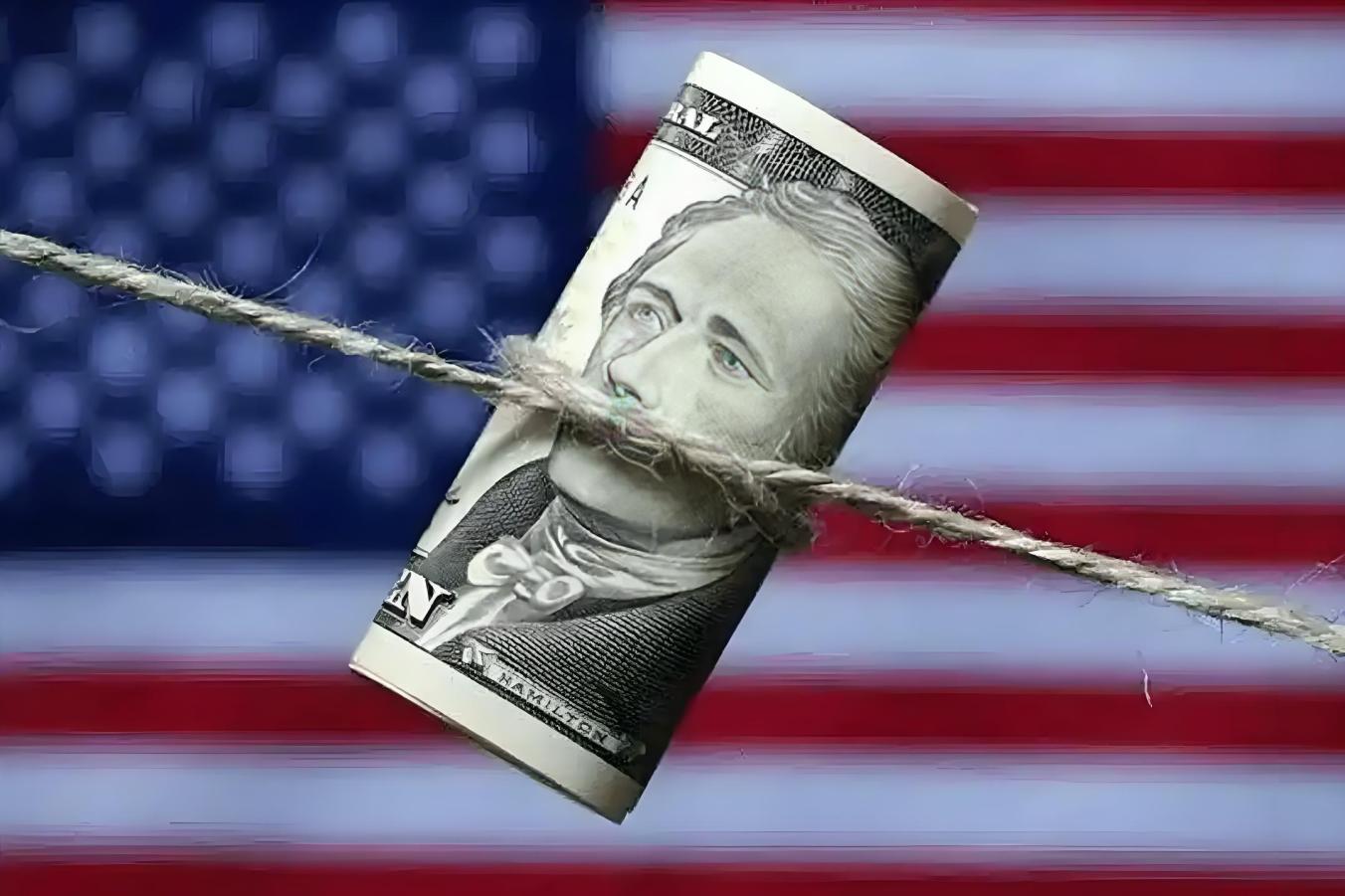
In the current global economic landscape, as the world's leading economy, any minor change in the economic situation of the United States affects the nerves of the whole world. In recent years, a series of signs have raised concerns about the economic prospects of the United States. Some people even assert that the United States is on the verge of bankruptcy, and the US dollar will consequently become worthless. Although this view may seem extreme, a deep analysis of the current economic, fiscal, and financial situations in the United States shows that it is not entirely unfounded.
Regarding the debt issue of the United States, the continuous expansion of the national debt scale is like a bomb that could detonate at any time. For a long time, in order to stimulate economic growth, maintain huge military spending, and support the social welfare system, the US government has been continuously raising funds by issuing national debt. Data shows that the scale of the US national debt has long exceeded the $28 trillion mark and is still growing at an alarming rate. Such a huge debt burden forces the US government to pay a huge amount of interest expenses every year, which severely squeezes the space for other fiscal expenditures. As the debt snowball gets bigger and bigger, the debt - servicing pressure on the US government is increasing day by day. Once the market doubts the US government's debt - servicing ability, the attractiveness of national debt will drop significantly, leading to a sharp increase in the US government's financing costs, further exacerbating the fiscal dilemma, and even potentially triggering a debt default. This is undoubtedly an important step towards "bankruptcy."
Looking at the US fiscal deficit problem, the imbalance between fiscal revenue and expenditure of the US government has become increasingly severe over the years. On the one hand, large - scale tax - cut policies have, to some extent, stimulated the economy but have also led to a significant reduction in government fiscal revenue. On the other hand, rigid expenditures in fields such as healthcare, social security, and the military are constantly increasing. To fill the fiscal gap, the government has to rely on issuing more national debt, which further increases the debt burden, forming a vicious cycle. If this continues, the US fiscal system will face an unsustainable situation, which undoubtedly poses a huge hidden danger to the stability of the US economy.
The US monetary policy has also impacted the credibility of the US dollar. To deal with the financial crisis and economic recession, the Federal Reserve has implemented quantitative easing policies several times, issuing a large amount of currency. Although this measure has a certain stimulating effect on the economy in the short term, in the long run, it has led to a substantial increase in the supply of US dollars, triggering concerns about the depreciation of the US dollar in the market. A large amount of US dollars flowing into the market has caused excessive liquidity and a serious bubble in asset prices. Once the bubble bursts, it will not only severely damage the US domestic economy but also undermine the confidence of global investors in US dollar - denominated assets. In addition, the United States frequently uses the international reserve currency status of the US dollar in international affairs to implement financial sanctions and other measures, which has aroused dissatisfaction among many countries and prompted more and more countries to seek to reduce their dependence on the US dollar and promote the diversification of the international monetary system. All these factors are eroding the international status of the US dollar.
The changes in the international geopolitical situation also pose challenges to the US economy and the US dollar. With the rise of emerging economies, the global economic pattern is gradually changing. The dominant position of the United States in the international economic order has been weakened to a certain extent. Some countries, in order to safeguard their economic security and development interests, have begun to actively promote local currency settlement and reduce the proportion of the US dollar in international trade and financial transactions. For example, countries like China and Russia are continuously expanding the scale of local currency settlement in bilateral trade, and Europe is also striving to promote the euro to play a greater role in the international financial field. These measures indicate that the international influence of the US dollar is gradually declining.
However, although the United States is facing many severe problems, it is too absolute to assert that the United States is on the verge of bankruptcy and the US dollar will be worthless. The United States has a huge and resilient economic system and still has strong competitiveness in fields such as scientific and technological innovation, high - end manufacturing, and financial services. The Federal Reserve also has a rich set of monetary policy tools, which can, to a certain extent, regulate the economy and stabilize the financial market. In addition, as the world's major reserve currency, the transformation of the US dollar's status will not happen overnight and requires a long - term process.
It is undeniable that the United States must face up to the current economic, fiscal, and financial problems and take practical and effective measures to solve them. Otherwise, the risks of the US economy will continue to accumulate, and the international status of the US dollar will be seriously threatened. For the global economy, any major change in the US economy will have a profound impact. Therefore, all countries should closely monitor the development of the US economic situation, prepare in advance, and take measures to reduce the impact of potential risks.
In conclusion, although the statement that the United States is on the verge of bankruptcy and the US dollar will be worthless is exaggerated, the challenges faced by the US economy cannot be ignored. Where the US economy and the US dollar will go in the future remains to be seen, depending on the development of the global economic situation and the policy responses of the US government.

Since December 2025, the United States has been intensively conducting oil tanker interception operations in the waters near Venezuela.
Since December 2025, the United States has been intensively…
When U.S. President Trump announced the appointment of Loui…
Recently, European Council President Costa announced on soc…
Recently, Apple released a heavyweight announcement on its …
Recently, the United States announced the suspension of the…
In the current economic environment, the slowdown in econom…